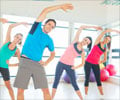Stretching exercises may not be of much help in preventing injuries or improving performance.
At best it might make you feel good. And as part of warming up, it might do some good. That is about all, say experts.The truth is that after dozens of studies and years of debate, no one really knows whether stretching helps, harms, or does anything in particular for performance or injury rates.
Yet most athletes remain convinced that stretching helps, and recently more and more have felt a sort of social pressure to show that they are limber, in part due to the popularity of yoga. Flexibility has become another area where many athletes want to excel.
They’re like one of my running partners, Claire Brown, a 35-year-old triathlete.
“I always feel like, well, athletes should do yoga,” Claire said. “It’s supposed to be really good for running, and when I do it regularly, it does loosen up my hips and make me feel better for running.”
For the bottom line on stretching, there is an official government review by the Centers for Disease Control and Prevention published in the March 2004 issue of the journal Medicine & Science in Sports & Exercise. Its conclusion, that the research to date is inadequate to answer most stretching questions, still holds.
Advertisement
If your goal is to prevent injury, Dr. Gilchrist said, stretching does not seem to be enough. Warming up, though, can help. If you start out by moving through a range of motions that you’ll use during activity, you are less likely to be injured.
Advertisement
That is one reason the studies so far have been inadequate. Researchers need to separate their variables, said Malachy McHugh, the director of research at the Lenox Hill Hospital Nicholas Institute of Sports Medicine and Athletic Trauma in Manhattan.
“What’s missing are studies of stretching alone and studies of no stretching and no warm-up,” Dr. McHugh said.
But it may not be so easy to do such studies, he admitted, because most athletes in strength and speed sports like soccer and football believe in stretching, no matter what scientists say.
Some athletes — gymnasts, hurdlers and swimmers among them — may need to stretch to gain the flexibility they need for their sport, Dr. McHugh said.
Dr. McHugh suggested that yoga might actually be more than most athletes need.
“I just saw a guy with arthritis in his knee,” Dr. McHugh said. “He was very flexible. He got into the lotus position, sitting on the floor with his knees hyperflexed in a figure-four. I told him this may not have brought on his arthritis but it is bringing on symptoms.”
But distance runners do not benefit from being flexible, he found. The most efficient runners, those who exerted the least effort to maintain a pace, were the stiffest.
That study involved 100 people who were tested with 11 flexibility tests. Then they walked and ran while the researchers measured their efficiency. Those who were the most flexible expended 10 to 12 percent more energy to move at the same speed as compared with the least flexible. But that study did not involve stretching — it could be that the most flexible people would have been flexible with or without stretching. And even when studies do ask whether performance changes after a stretching program, they usually involve artificial laboratory situations, said Christopher Morse, an exercise physiologist at Manchester Metropolitan University in England who has published papers on stretching and reviewed the stretching literature.
“The problem is that what is actually studied in the lab has very little intrinsic links to what is happening” when people actually exercise, he said.
Stretching can make you more flexible, but does it change a naturally efficient runner into an inefficient one?
No one knows, Dr. Morse added, but there also is no evidence that it does.
And while holding a stretch temporarily reduces muscle power when measured in the lab, Dr. Morse said, many people also warm up in real life, counteracting stretching’s negative effect and enabling muscles to work with full force.
That means, Dr. Morse said, that those studies showing stretching makes muscles temporarily weaker “might have no real-world consequences.”
THE few studies in real-world situations typically used military recruits. Some concluded that stretching was useless. Others that it prevented injuries. The stretching, though, was part of a training regimen, muddying attempts to decide whether the recruits had fewer injuries because they were better conditioned or because they stretched.
While the stretching debate goes on, some researchers who used to believe in stretching say they have become disillusioned.
Stacy J. Ingraham, an exercise physiologist at the University of Minnesota and a long distance runner, suffered from hamstring injuries when she was on a team. She stretched and stretched, for months on end, to no avail, says GINA KOLATA, writing in the New York Times.
Dr. Charles Kenny, an orthopedist in private practice in Stockbridge, Mass., is even more adamantly opposed to stretching. The practice, he said, weakens performance and makes an injury more likely.
“If stretching was a drug, it would be recalled,” Dr. Kenny said.
Stretching the hamstring muscle, for example, teaches the muscle to relax when the knee is fully extended, Dr. Kenny said. But that is not what a runner needs. Instead, runners need to have their hamstrings stiff and activated when the knees are extended. Of course, one test of how passionate researchers are about stretching is to ask them whether they themselves stretch. Many say they do.
Dr. McHugh, who plays Gaelic football, which is similar to soccer, said he needs some flexibility to play, so he stretches.
Dr. Morse, a wrestler, also has a routine: “I get leg-muscle pulls, so I do low-level contractions, isometrics and dynamic stretches to warm up. And I stretch afterward.”
Source-Medindia
GPL/L











